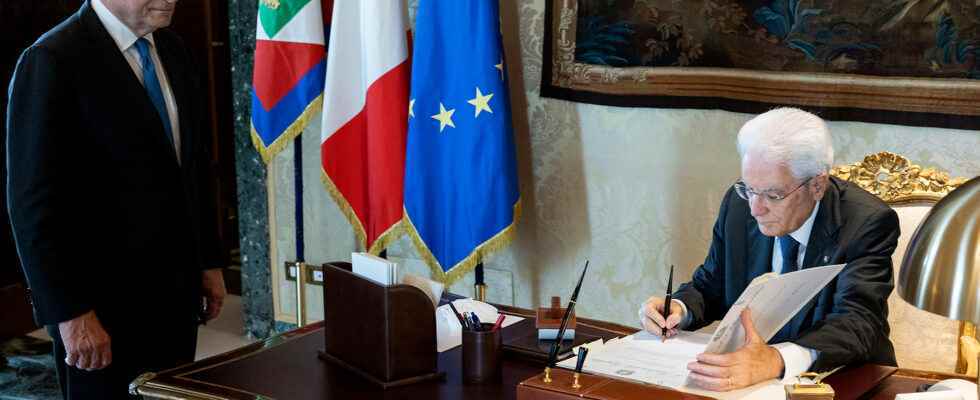Updated
Since the resignation of Mario Draghi on July 21, Italy has been in the grip of a political crisis. If the left wishes to take up the agenda of the former president of the Council of Ministers, the reality is quite different.
Why Mario Draghi resigned on July 21, 2022?
At the head of the Italian executive since February 2021, the Italian Prime Minister resigned on July 21, 2022 after an abstention during a vote of confidence in the Senate of the League, the 5 Star Movement (M5S) and Forza Italia. The coalition he had managed to create in Parliament when he arrived was shattered. The right-wing political parties having abstained are now vying for the legislative campaign with those on the left. A week before, in Parliament, the M5S chaired by Giuseppe Conte, the former president of the Council of Ministers, had abstained during the vote of confidence, however won by Mario Draghi, triggering the political crisis. Seeing then an opportunity for early elections, the parties Forza Italia and the League also abstained with the M5S during the vote of confidence in the Senate.
What consequences for the country and for Europe?
This disavowal by three parties in his coalition once again plunges Italy into a political crisis. Accustomed to political instability for many years, Mario Draghi had nevertheless succeeded in stabilizing the political landscape by creating a coalition with all the parties, except one: Fratelli d’Italia. His resignation comes at a time when a European recovery plan of 191 billion euros is allocated to Italy. No other country has received so much. The country still has 75% of this aid to receive by 2026. Heavily indebted, the country will only obtain this sum if it has a stable government, which can undertake many reforms required in return, like that of Justice, one of the slowest and most inefficient in Europe.
A legacy recovered by left-wing parties?
While 72% of Italians say they are worried, even very worried about this resignation – according to an Ipsos survey – the Italian left is trying to recover the legacy left by the now ex-president of the Italian Council. However, in the absence of an incarnation of its ex-leader, Mario Draghi’s agenda will not be the heart of the campaign. Some small centrist and European parties weighing between 5 and 6% of voting intentions such as Azione and +Europa have taken up elements of his policy. Italian political scientist Giovanni Orsina believes that “the Draghi agenda is already over”. The centre-left Democratic Party (PD) is seeking to reclaim its electorate and has set aside the Draghi agenda. No place for the Republican front.
The favorites for the legislative elections
Credited with 45% of the voting intentions, the Italian right with the extremist party Fratelli d’Italia at the head of the gondola enjoys a solid lead. Only the quality of the left’s coalition could reduce the gap between them and the right. A gap estimated for the moment between 10 and 12 points. The former president of the European Central Bank was nevertheless very popular with Italians, with 62% of favorable opinions according to Ipsos, from all political stripes. The truth of the polls will be revealed on September 25, 2022.
